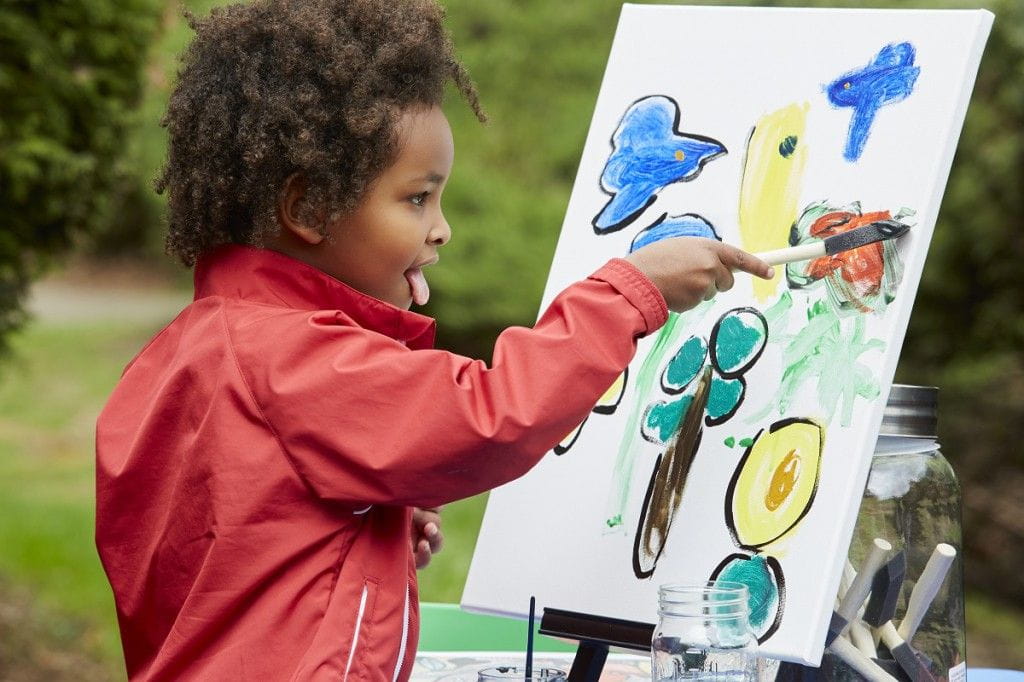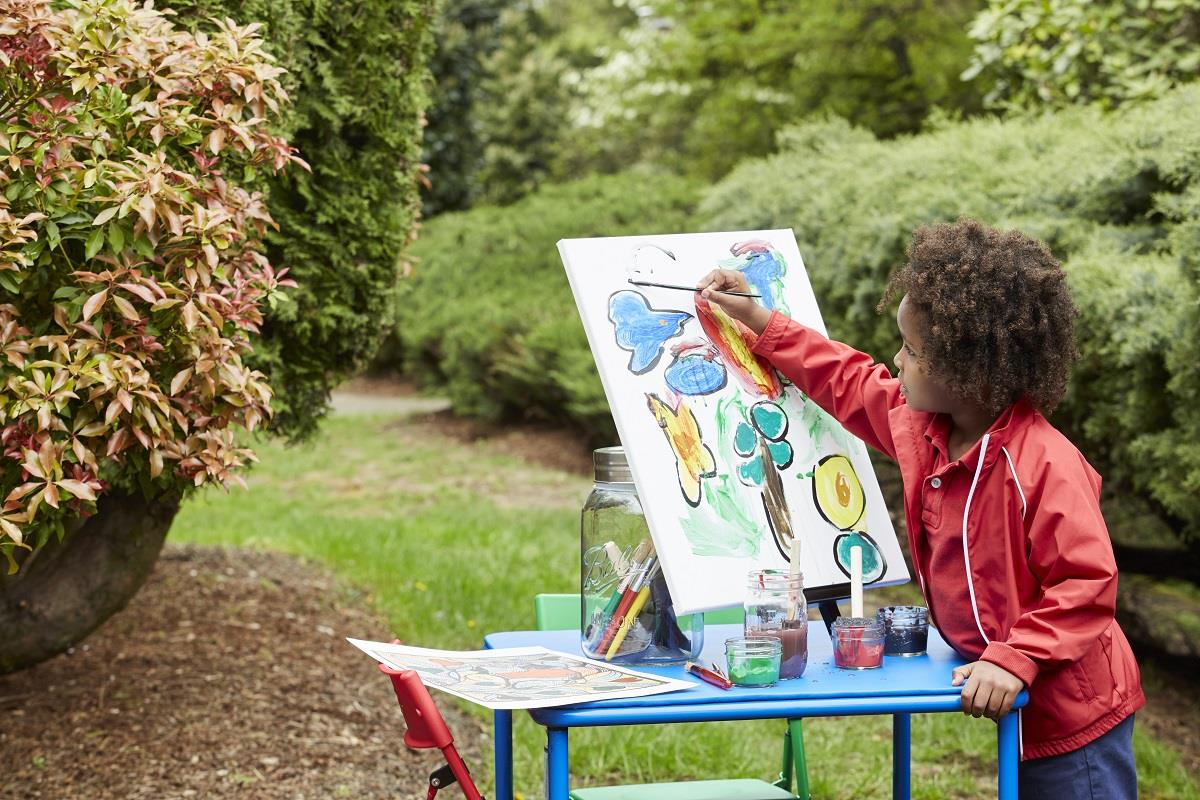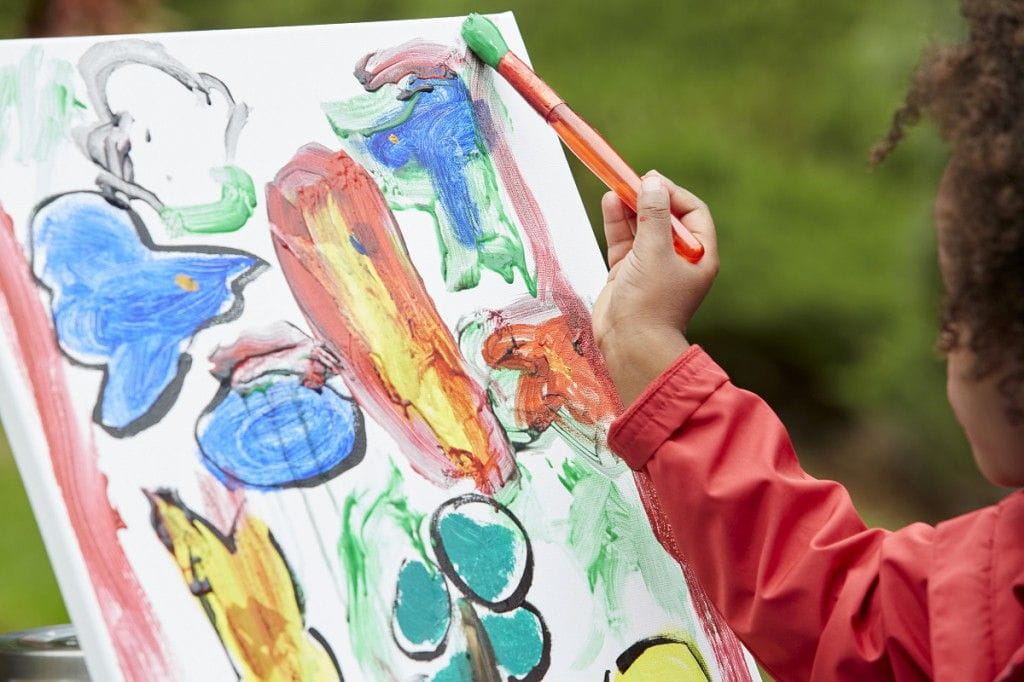Bright, Bold, Brave: Let Him Paint His Very Own World

The bright hues and bold outlines of Haitian folk artist St. Pierre Toussaint’s Birds and Flowers are eye-catching to art-lovers of any age—and that’s just one of the reasons why we study his playful work in our Pre-K classrooms.
We know that talking with kids about art is a terrific way to help them discover the world. From colors and shapes to creative expression, great works of art can teach young children a lot. Of course, kids tend to learn best with a hands-on approach, so roll up your sleeves, throw on a smock, and get inspired to paint like Toussaint!
1. Start with a quick folk-art primer.
St. Pierre Toussaint spent much of his life working as a farmer and didn’t begin his painting career until he was 49 years old (which just goes to show that no matter your age, it’s never too late to start exploring a new passion). Toussaint’s interest in painting was sparked by watching his neighbor, Michele Manuel, create paintings of local life in warm, bold colors. Rather than attend school to learn how to paint, Toussaint developed his craft through experimentation and collaboration with other artists—which is why he is considered to be a folk artist. Toussaint’s paintings transform natural objects into simple, graphic shapes that are full of feeling, playfulness, and life.
2. Then, boldly get painting.
Toussaint painted using just a few colors at a time, which makes the dark outlines of his objects stand out even more. Challenge your child to paint with three colors—blue, red, and yellow, say—and have him try not to mix them!

3. Outline it.
In Birds and Flowers, Toussaint outlined colorful bird and flower shapes in dark colors, a technique that made these typically soft and ethereal shapes stand out or “pop” against the background. Let your kiddo’s artistic vision fly free while she paints birds and flowers (or any shapes at all) on her paper. After she’s painted the basic shapes, try outlining them in black crayon or paint to achieve that same visual zing.
4. Ask questions together.
Curious conversations over an easel help your child to develop a keen eye and critical-thinking skills, so talk about the painting together (and check out Toussaint’s paintings online). How do dark outlines change the way shapes look? Do the outlines make things look less “real” and more like cartoons? Why? Have fun!

5. Mix it up.
Toussaint combined patterns like repeating lines, curving waves, and semicircles with bold colors and shapes to create contrast. If your child’s masterpiece is filled with big, solid, colorful shapes, hand him a small brush or marker and encourage him to explore drawing patterns and lines in the remaining white space.





